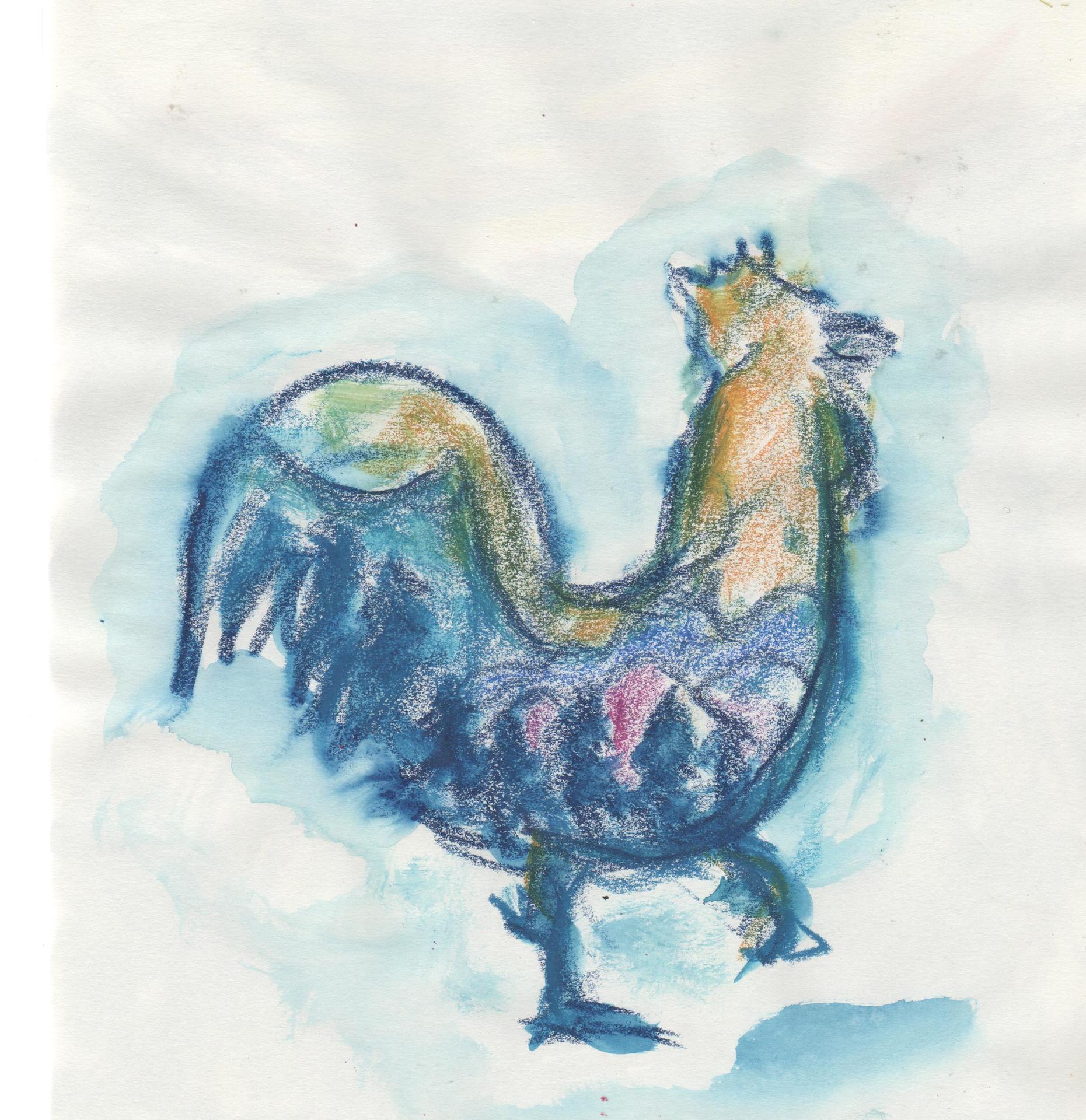朝日記170314 Hermann-Pillath VI-2 (continues;Literatures and Notes )
朝日記170314 Hermann-Pillath VI-2 (Literatures and Notes)
V1 ご案内に返る
VI -1 (朝日記170314特集翻訳Hermann-Pillath 「エントロピー、機能(関数)および進化」(I))

*本論の参考文献Literatures and Notes
*付録 理解のために参考になりそうな文献 Translater's Notes
75. Virgo, N. From maximum entropy to maximum entropy production: a new approach. Entropy
2010, 12, 107–126.
76. Kleidon, A. Non-equilibrium thermodynamics, maximum entropy production and earth-system
evolution. Philos. Trans. R. Sco. London A 2010, 368, 181–196.
77. Paltridge, G.W. A story and a recommendation about the principle of maximum entropy
production. Entropy 2009, 11, 945–948.
78. Deutsch, D. The Fabric of Reality; Penguin: London, UK, 1997.
79. Lahav, N.; Nir S.; Elitzur, A.C. The emergence of life on earth. Progr. Biophys. Mol. Biol. 2001,
75, 75–120.
80. Hoffmeyer, J. Genes, development and semiosis. In Genes in Development. Re-reading the
Molecular Paradigm, Neumann-Held, E., Rehmann-Sutter, C. Eds.; Duke University Press:
London, UK, 2006; pp. 152–174.
81. Sober, E.; Wilson, D.S. Unto Others. The Evolution and Psychology of Un-selfish Behavior;
Harvard University Press: London, UK, 1998.
82. Price, R.G. The Nature of Selection. J. Theor. Biol. 1995, 175, 389–396.
83. Kleidon, A.; Ralph L. Entropy production in earth system processes. In Non-equilibrium
Thermodynamics and the Production of Entropy. Life, Earth, and Beyond; Kleidon, A., Lorenz,
R., Eds.; Springer: Heidelberg, Germany, 2005; pp. 1–20.
84. Lotka, A. Contribution to the energetics of evolution. Proc. Natl. Acad. Sci. USA 1922, 8,
147–151.
85. Lotka, A. Natural selection as a physical principle. Proc. Natl. Acad. Sci. USA 1922, 8, 151–154.
86. Lotka, A. The law of evolution as a maximal principle. Human Biology 1945, 17, 167–194.
87. Vermeij, G.J. Nature: An Economic History; Princeton University Press: Princeton, NJ, USA,
2004.
88. Odum, H.T. Environment, Power, and Society for the Twenty-First Century. The Hierarchy of
Energy; Columbia University Press: New York, NY, USA, 2007.
Entropy 2010, 12
241
89. Robson, A.J. Complex evolutionary systems and the red queen. Econ. J. 2005, 115, F211-F224.
90. Zahavi, A.; Zahavi, A.. The Handicap Principle. A Missing Piece of Darwin’s Puzzle; Oxford
University Press: New York, NY, USA, 1997.
91. Dawkins, R. The Selfish Gene. New edition; Oxford University Press: Oxford, UK, 1989.
92. Grafen, A. Biological signals as handicaps, J. Theor. Biol. 1990, 144, 517–546.
93. Brooks, D.R.; Wiley, E.O. Evolution as Entropy. Toward a Unified Theory of Biology; Chicago
University Press: Chicago, IL, USA, 1988.
94. Layzer, D. Growth of order in the universe. In Entropy, Information, and Evolution. New
Perspectives on Physical and Biological Evolution; Weber, B.H., Depew, D.J., Smith, J.D., Eds.;
MIT Press: Cambridge, MA, USA, 1988; pp. 23–40.
95. Matthen, M. Teleosemantics and the consumer. In Teleosemantics. New Philosophical Essays,
Macdonald, G., Papineau, D., Eds.; Oxford University Press: Oxford, UK, 2006; pp. 146–166.
96. Ben Jacob, E. Bacterial wisdom, gödel’s theorem and creative genomic webs. Physica. A 1998,
248, 57–76.
97. Emmeche, C.; Hoffmeyer, J. From language to nature–the semiotic metaphor in biology.
Semiotica 1991, 84, 1–42.
98. Atkin, A. Peirce's theory of signs. In The Stanford Encyclopedia of Philosophy, Spring 2009 ed.;
Edward N.Z. Ed.; The Metaphysics Research Lab Center for the Study of Language and
Information Stanford University: http://plato.stanford.edu/archives/spr2009/entries/peircesemiotics/
(accessed on 3 January, 2010).
99. Peirce, C.S. The Essential Peirce. Selected Philosophical Writings; Houser, N., Kloesel, C., Eds.;
Indiana University Press: Bloomington, IN, USA, 1998; Volume 2.
100. Neander, K. Content for cognitive science. In Teleosemantics. New Philosophical Essays;
Macdonald, G., Papineau, D., Eds.; Oxford University Press: New York, NY, USA, 2006; pp.
167–194.
101. Millikan, R. Biosemantics. J. Philos. 1989, 86: 281–297.
102. Millikan, R. Language: A Biological Model; Clarendon: Oxford, UK, 2005.
103. Lotman, J. On the semiosphere. Sign Syst. Stud. 2005, 33, 205–229.
104. Hoffmeyer, J. Signs of Meaning in the Universe; Indiana University Press: Bloomington, IN,
USA, 1999.
105 Smil, V. Energy in Nature and Society. General Energetics of Complex Systems; MIT Press:
Cambridge, MA, USA, 2008.
106. Andrade, E. A Semiotic framework for evolutionary and developmental biology. Biosystems
2007, 90, 389–404.
107. Chaisson, E.J. Cosmic Evolution. The Rise of Complexity in Nature; Harvard University Press:
Cambridge, MA, USA, 2001.
108. Chaisson, E.J. Non-equilibrium thermodynamics in an energy-rich universe. In: Non-equilibrium
Thermodynamics and the Production of Entropy. Life, Earth, and Beyond; Kleidon, A., Lorenz,
R, Eds.; Springer: Heidelberg, Germany, 2005; pp. 21–31.
109. Susskind, L. The Cosmic Landscape. String Theory and the Illusion of Intelligent Design; Little,
Brown and Company: New York, NY, USA, 2006.
110. Smolin, L. The Life of The Cosmos; Oxford University Press: Oxford, UK, 1997.
Entropy 2010, 12
242
111. Smolin, L. Scientific alternatives to the anthropic principle. 2007; Cornell University Library:
arXiv:hep-th/0407213.
112. Popper, K.R. Realism and the Aim of Science; Hutchinson: London, UK, 1983.
113. Herrmann-Pillath, C. The brain, its sensory order and the evolutionary concept of mind. on
hayek's contribution to evolutionary epistemology, J. Soc. Biol. Struct. 1992, 15, 145–187.
114. Hayek, F.A.von. Studies in Philosophy, Politics, and Economics; Routledge & Kegan Paul:
London, UK, 1967.
115. Wolfram, S. A New Kind of Science; Wolfram Media: Champaign, IL, USA, 2002.
116. Wolpert, D. Computational capabilities of physical systems. Phys. Rev. E. 2001, 65, 016128.
117. Tomasello, M.; Carpenter, M.; Call, J.; Behne, T.; Moll, H. Understanding and sharing
intentions: the origin of cultural cognition. Behav. Brain Sci. 2005, 28, 675–735.
118. Frith, C.D.; Singer, T. The role of social cognition in decision making. Philos. Trans. R. Sco.
London B 2008, 363, 3975–3886.
119. Frith, U.; Frith, C.D. Development and neurophysiology of mentalizing. Philos. Trans. R. Sco.
London B 2003, 358, 459–473.
120. Penrose, R. The Emperor’s New Mind. Concerning Computers, Minds, and the Laws of Physics;
Oxford University Press: Oxford, UK, 1989.
121. Lucas, J.R. Minds, machines, and Gödel. Philosophy 1961, XXXVI, 112–127.
122. Buenstorf, G. The Economics of Energy and the Production Process. An Evolutionary Approach;
Edward Elgar: Cheltenham, UK, 2004.
123. Herrmann-Pillath, C. The Economics of Identity and Creativity. A Cultural Science Approach;
University of Queensland Press: Brisbane, Australia, 2010.
124. Ayres, C.E. The Theory of Economic Progress; University of North Carolina Press: Chapel Hill,
NC, USA, 1944.
125. Pinch, T., Swedberg, R., Eds. Living in a Material World. Economic Sociology Meets Science
and Technology Studies; MIT Press: Cambridge, MA, USA, 2008.
© 2010 by the author; licensee Molecular Diversity Preservation International, Basel, Switzerland.
This article is an open-access article distributed under the terms and conditions of the Creativeommons Attribution license (http://creativecommons.org/licenses/by/3.0

理解のために参考になりそうな文献
1.No.7660 Entropy, Function and Evolution: Naturalizing Peircian Semiosis
Carsten Herrmann-Pillath
Entropy 2010, 12, 197-242; doi:10.3390/e12020197
http://www.vcasi.org/sites/default/files/entropy2.pdf
2.No.7680 on Charles Sanders PeirceとNorbert Wiener
Philosophy of information
From Wikipedia, the free encyclopedia
https://en.wikipedia.org/wiki/Philosophy_of_information
3.No.7680Charles Sanders Peirce
(1839-1914)
http://www.informationphilosopher.com/solutions/philosophers/peirce/
4. No.7680 Norbert Wiener
(1894-1964)
http://www.informationphilosopher.com/solutions/scientists/wiener/
5.No.7590 John Searle
https://en.wikipedia.org/wiki/John_Searle
Biological naturalism
https://en.wikipedia.org/wiki/Biological_naturalism
6.荒井康全 システム思考における目的論理と社会倫理についてV
制度(論)からみたシステムの多元的目的論理 総合知学会誌 vol.2015-1
総合知学会
7.No.7650 Jaynes Principle of maximum entropy
From Wikipedia, the free encyclopedia
https://en.wikipedia.org/wiki/Principle_of_maximum_entropy
The principle was first expounded by E. T. Jaynes in two papers in 1957[1][2] where he emphasized a natural correspondence between statistical mechanics and information theory.
1957年にJaynesによって統計力学と情報理論の間の自然な対応が拡張された原理である。
8.最大エントロピー原理 - Wikipedia
9.PDF版印刷用
↑(No.7650 Jaynes 補助説明として)
10.No.7650
Maximum entropy probability distribution
From Wikipedia, the free encyclopedia
https://en.wikipedia.org/wiki/Maximum_entropy_probability_distribution
11.Calculus of variations
From Wikipedia, the free encyclopedia
https://en.wikipedia.org/wiki/Calculus_of_variations
↑No.7650
12.Lagrange multiplier
From Wikipedia, the free encyclopedia
https://en.wikipedia.org/wiki/Lagrange_multiplier
see example3 there.
↑
13.No.7650
Entropy (information theory)
From Wikipedia, the free encyclopedia
(Redirected from Information entropy)
https://en.wikipedia.org/wiki/Entropy_(information_theory)
14.No.7690 Jaynesの論文
sfb.tex 5/18/1998.
THE SECOND LAW AS PHYSICAL FACT
AND AS HUMAN INFERENCE
E. T. Jaynes
Wayman Crow Professor of Physics
Washington University
St. Louis MO 63130, U.S.A.
15.No.7690 Probability Theory:
The Logic of Science
By E. T. Jaynes
Wayman Crow Professor of Physics Washington University
St. Louis, MO 63130, U. S. A. Dedicated
Copyright c 1995 by Edwin T. Jaynes.
16.No.7700 Lotka’s principle
Maximum power principle
From Wikipedia, the free encyclopedia
https://en.wikipedia.org/wiki/Maximum_power_principle
17.Maximum power transfer theorem
From Wikipedia, the free encyclopedia
(Redirected from Maximum power theorem)
https://en.wikipedia.org/wiki/Maximum_power_transfer_theorem
8.No.7640 Eric Chaisson
From Wikipedia, the free encyclopedia
https://en.wikipedia.org/wiki/Eric_Chaisson
"Energy Rate Density as a Complexity Metric and Evolutionary Driver," Complexity, v 16, p 27, 2011; DOI: 10.1002/cplx.20323.
19."Energy Rate Density. II. Probing Further a New Complexity Metric,"
Complexity, v 17, p 44, 2011.
20.No.7670
Many-worlds interpretation
From Wikipedia, the free encyclopedia
https://en.wikipedia.org/wiki/Many-worlds_interpretation
21.No.7660
The Fabric of Reality
From Wikipedia, the free encyclopedia
https://en.wikipedia.org/wiki/The_Fabric_of_Reality
22.No.7620 supervenience 付随性
https://ja.wikipedia.org/wiki/%E4%BB%98%E9%9A%8F%E6%80%A7
(Japanese)
23.https://en.wikipedia.org/wiki/Supervenience
(English)
24.No.7710
Supervenience
First published Mon Jul 25, 2005; substantive revision Wed Nov 2, 2011
https://plato.stanford.edu/entries/supervenience/
25.From Wikipedia, the free encyclopedia
https://en.wikipedia.org/wiki/Supervenience
26.No.7710 String Theory
https://en.wikipedia.org/wiki/String_theory
27.弦理論
https://ja.wikipedia.org/wiki/%E5%BC%A6%E7%90%86%E8%AB%96
28.No.7660 Ontogeny
From Wikipedia, the free encyclopedia
https://en.wikipedia.org/wiki/Main_Page
以上
V1 ご案内に返る
VI -1 (朝日記170314特集翻訳Hermann-Pillath 「エントロピー、機能(関数)および進化」(I))




























※コメント投稿者のブログIDはブログ作成者のみに通知されます